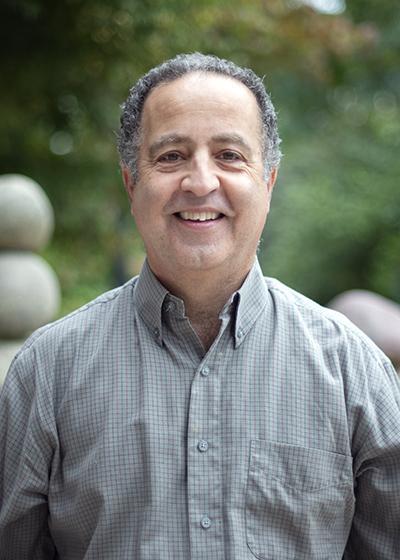Raymond G. Najjar
Biography:
Seeking a field where I could apply my love of math and science, I chose an engineering major in college. Studying fluid mechanics as a mechanical engineering major was an epiphany to me, but at the same time I became increasingly interested in the environment, inspired in no small part by brilliant science communicators like Rachel Carson, David Attenborough, and Carl Sagan. I made a lucky guess that graduate study in oceanography and atmospheric science would be a perfect marriage of my interests. My early research focused on large-scale, open-ocean biogeochemistry, particularly the cycling of nutrients (nitrogen, phosphorus, and silicon), oxygen, and carbon. A few years after arriving at Penn State in 1993, I became interested in coastal issues, such as eutrophication, hypoxia, and sea-level rise. I worked on numerous regional climate impact assessments, including one that was part of the first National Climate Assessment. I am mainly a data analyst, but I also use numerical models and remote sensing. Occasionally, I am lucky enough to go to sea, and have conducted studies in the Sargasso Sea and coastal waters of Antarctica and the Eastern United States. I've received funding for my research from the Environmental Protection Agency, the National Oceanic and Atmospheric Administration, the National Aeronautics and Space Administration, the National Science Foundation, the Pennsylvania Department of Environmental Protection, and Pennsylvania Sea Grant.
Stance and public engagement on climate change:
Humans are massively and rapidly transforming the climate. The overwhelming majority of the impacts are negative and will get worse. For example, coral reefs, one of the most important and wondrous ecosystems on Earth, are poised for permanent demise as a result of overheating and acidification. If we do not act quickly and aggressively to reduce greenhouse gas emissions or remove carbon dioxide from the atmosphere, we will be leaving a planet to our children and grandchildren that is a shadow of its former self. While our knowledge of the climate system is not perfect (and never will be), we know enough to act. Fossil fuels have served society very well but they have outlived their usefulness. Much safer forms of energy from the wind and sun should be deployed on a massive scale to save the planet from catastrophe.
I am available to give public presentations on climate change within an hour's drive from State College, PA or via webinar. Here are some presentations I have given:
- A climate science update. Centre County Democrats Leadership Circle Summer Reception, Boalsburg, PA. June 20, 2023. PDF PPT
- Climate change in the Mid-Atlantic Region. Mid-Atlantic Partnership Conference. Virtual. January 15, 2021. PDF PPT
- The oceans and climate change. Foxdale Village Retirement Community, State College, PA (Virtual). January 13, 2021 PDF PPT Video
- Managing the threats of climate change in Pennsylvania. Mifflin County Public Library, Lewistown, PA. November 12, 2019. PDF PPT
- Regional climate change impacts: What science tells us. The p4 Pittsburgh Climate Action Summit, Pittsburgh, PA. October 30, 2019. PDF PPT
- Global warming as an opportunity. Cheryl Beth Silverman Memorial Lecture, The Academy of Natural Sciences of Drexel University. Phildadelphia, PA. May 8, 2019. PDF
- What climate change means for Chesapeake Bay restoration. St. Andrew’s Church Adult Forum, State College, PA. February 24, 2019. PDF PPT
- Climate impacts on Pennsylvania. Citizens Climate Lobby Regional Conference Symposium, Philadelphia, PA. February 18, 2017. PDF PPT
- Turning back the Crimson Tide: How to manage the unavoidable and avoid the unmanageable as Pennsylvania’s climate starts to look like Alabama’s. University Club Fireside Chat, State College, PA. May 17, 2016. PDF
- Five actions on climate change. Meeting of Good Shepherd Catholic Church Environmental Committee, State College, PA. January 24, 2016. PDF PPT
Click here for full publication list. All publications are available upon request.


